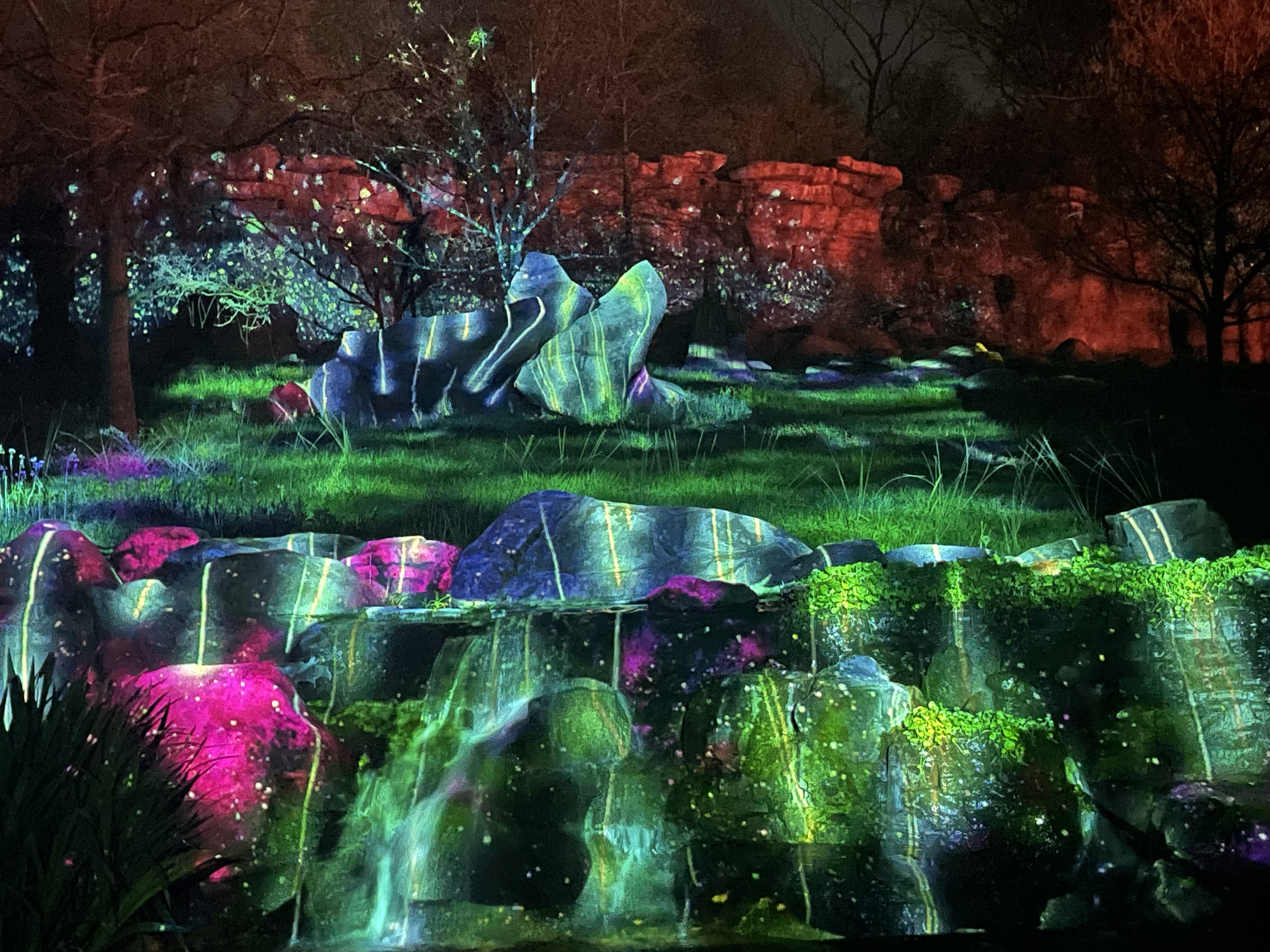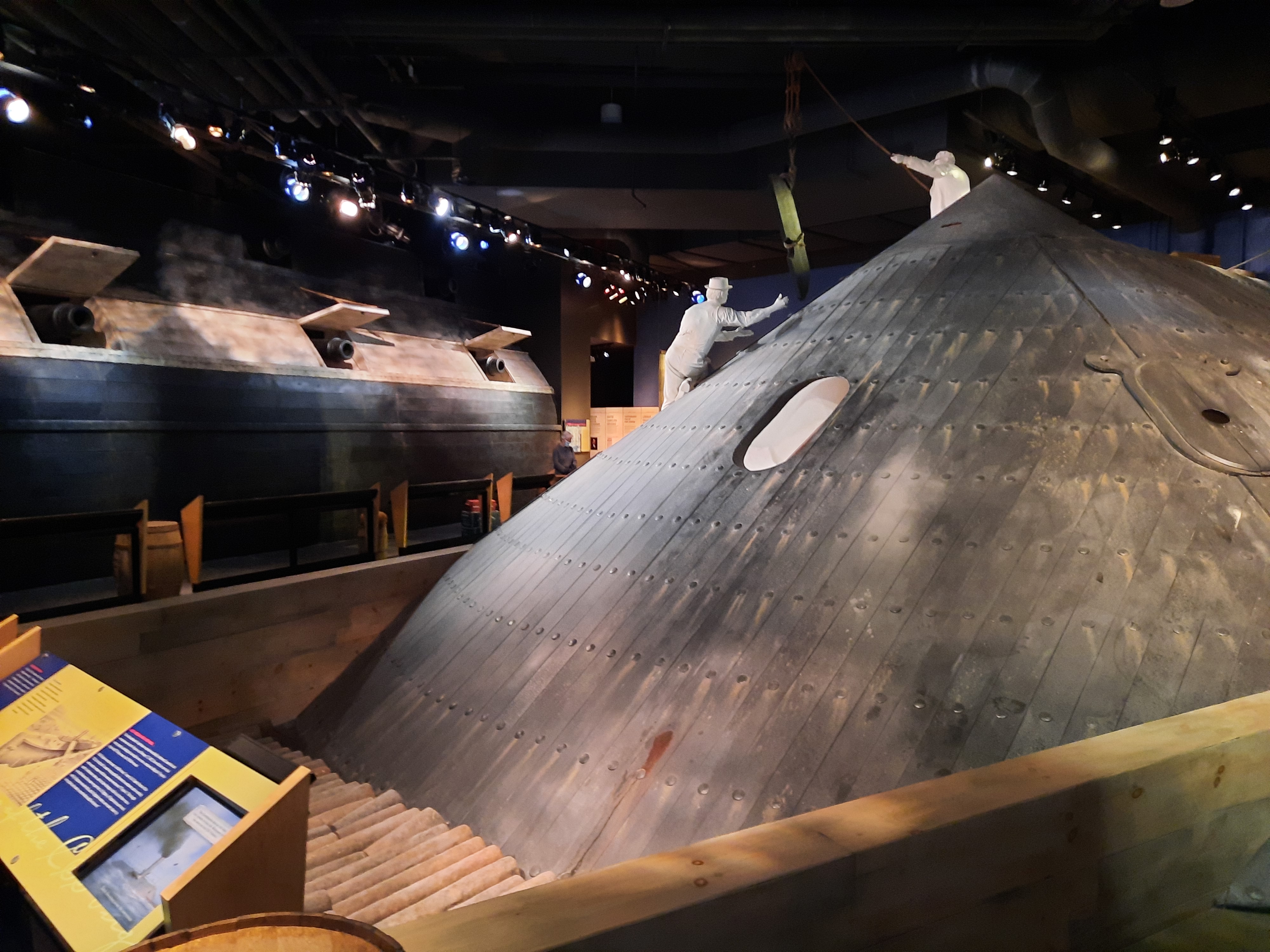No matter the colors used or brightness levels set, lighting is an ideal way to evoke a variety of emotions and provide a more immersive experience within larger AV installs and projects. Everyone is looking for ways to bring foot traffic back to their locations—and the Nashville Zoo at Grassmere and the Mariners’ Museum and Park in Newport News, VA, are using innovative lighting projects to bring new life to their attractions.
[DiGiCo Consoles Power Chicago's Museum of Contemporary Art]
Klip Collective, a visual art firm that specializes in hyperreal projection, lighting, and audio design, collaborated with the Nashville Zoo on a concept to increase visitation at night, creating a unique opportunity for engagement while most of the animals were asleep. The concept quickly became known as “Night Visions—A Wild Display of Light and Sound,” an immersive celebration of art and nature through the use of vibrant imagery, projection mapping, and immersive audio.
Nashville-based event technology provider DWP Live was brought on board to take the idea from concept to reality, helping to manage the install process, selecting the best technology, and providing ongoing support. The program will continue to run Thursday-Sunday nights through mid-July.
Sights and Sounds
As the sun sets and the animals settle into sleep, a combination of light and sound create a breathtaking spectacle. As visitors make their way through the different areas of the zoo—including the Entry Village, Festival Field, Expedition Peru: Trek of the Andean Bear, and the Jungle Gym Playground—pathways, trees, and bodies of water are transformed through the imaginative use of projection and audio for an experience that seamlessly bridges technology and storytelling. Using an upgraded audio system consisting of outdoor rated Crown amplifiers and QSC and JBL speakers, a musical score created specifically for the project adds an extra element of immersive engagement amongst the animal-themed imagery.

Epson Pro Series laser projectors, including four EB-PU2010B, three Pro L1755UNL, and six Pro L20000U, use 3LCD technology to create lifelike images with outstanding brightness and vivid color depth. The projectors were selected for the project due to their size, which allows them to be hidden better during the day and are unintrusive to the visitors and animals, as well as their lower maintenance costs.
“One of the biggest challenges with these kinds of installations historically is budget for maintenance,” said Danny Whetstone, founder, DWP Live. “Lamps are expensive, and you run a projector for 800-900 hours and then you have to replace the lamp. With the new laser technology, you have got a 25,000-hour laser lifetime on the light engine, and that’s really allowed more opportunities to develop for these kinds of projects from a budget perspective and not have those incredible maintenance costs.”
[Epson Projectors Create Innovative Immersive Experience in Nashville]
To protect them from the elements, the projectors are installed in IP65-rated housings that are waterproof and weatherproof. All control elements, including audio, media servers, networking, and video distribution, were also housed within their own AV system racks in an environmental enclosure. None of the enclosures are located within animal exhibits, but are still able to be hidden in a way that allow them to go unnoticed by visitors.
Klip Collective was also responsible for all elements of the projection mapping, including the creation of content, renderings, and warping and blending of content. The firm spent eight days on site using its own custom warping and projection software through TouchDesigner to design content ranging from small creatures emerging on rock walls to beautiful, colorful projections appearing through a waterfall.
This is the first big integration at home for DWP Live, and Whetstone was thrilled to have the opportunity for their friends and families to be able to experience this unique install alongside them. “It is a real joy for us to have this opportunity to support Nashville directly as a Nashville-based company, and to be able to do something right here at home that supports our local community,” he said.
Spotlight on the Sea
Home to one of North America’s largest maritime history collections, the Mariners’ Museum and Park recently upgraded its lighting control system to the Strand NEO CONSOLE from Signify, helping to enhance overall storytelling capabilities through the use of dynamic colors and visual effects within its theaters and exhibits.
Throughout the exhibition areas, the museum can tailor individualized lighting settings based on the emotions and feelings the exhibition team is hoping to evoke for the visitors. For example, dynamic and somber lighting is used within the theater spaces, which helps create the sense that visitors are experiencing the action for themselves.

Eventually, the center will also use the lighting system to highlight artifacts from the USS Monitor wreck. The USS Monitor Center, which was added to the museum 15 years ago, is one of the largest conservation projects of its type, with more than 3,000 artifacts actively being conserved by the museum. Currently, the museum is replacing all the LED lighting within its exhibition spaces in an effort to conserve and highlight the items.
One of the main reasons the museum selected the Strand NEO CONSOLE was its ability to transfer show files from their old system with ease. Tim Kines, audiovisual expert technician for the Mariners’ Museum and Park, was worried he would have to rebuild all their old show files when moving over to a new system—and was relieved to learn the NEO system would act as more of a plug-and-play option.
“We needed to upgrade our control console to add dynamics and effects via a simple-to-use interface, and the NEO fit perfectly,” said Kines. Its ease of use also allows for museum IT and security staff to learn basic settings for turning the lights on and off, helping them perform those functions on those early mornings or late evenings when the AV staff isn’t present.
The timing of the project sadly coincided directly with the pandemic, with the initial site visit with contracted lighting design firm Available Light taking place right before the shutdown. With Available Light unable to be on site, Kines was left to do a lot more of the work than he was expecting, including installing the hardware himself.
Available Light assisted him remotely with the transferring of files and adjusting of levels until the firm was eventually allowed to return to the museum. Kines operated as the eyes and ears on the ground for the contractors and even worked with Strand directly to figure out issues concerning timing of lighting within the theaters.
[Extron Enhances Capabilities at the Dallas Holocaust and Human Rights Museum]
While the user experience is as close as possible to the old system, Kines is excited for what lies ahead. “The future possibilities are there—and the ability to change light intensity and cues in real time will be very useful,” said Kines. “The level of control we now have with the NEO is impressive. We are in the process of training people to become power users of the software, and then the sky's the limit for creativity. As we change our exhibits and get ready to display additional USS Monitor artifacts as they are fully conserved, we will most likely change the lighting schematic in a radical way.”

